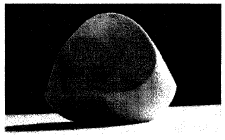 Last 23 April 2020, the Court of Justice of the European Union answered three questions referred to it by the Kúria (Supreme Court of Hungary) in its judgment on Case C-237/19, concerning the registration of a three-dimensional sign as a trade mark, based on the interpretation of Article 3(1)(e)(ii) and (iii) of Directive [2008/95], in particular:
Last 23 April 2020, the Court of Justice of the European Union answered three questions referred to it by the Kúria (Supreme Court of Hungary) in its judgment on Case C-237/19, concerning the registration of a three-dimensional sign as a trade mark, based on the interpretation of Article 3(1)(e)(ii) and (iii) of Directive [2008/95], in particular:
In other words, is it permissible to take into account the fact that the relevant public is aware that the shape for which registration is sought is necessary in order to obtain the technical result sought?
Regarding whether to determine whether a sign consists exclusively of the shape of goods which is necessary to obtain a technical result, the court upheld that the “assessment does not have to be limited to the graphic representation of that sign. Information other than that relating to the graphic representation alone, such as the perception of the relevant public, may be used in order to identify the essential characteristics of the sign at issue. However, while information which is not apparent from the graphic representation of the sign may be taken into consideration in order to establish whether those characteristics perform a technical function of the goods in question, such information must originate from objective and reliable sources and may not include the perception of the relevant public.”
As regards the perception or knowledge of the relevant public in relation to the product represented graphically by a sign, which consists exclusively of the shape of that product, the Court stated that it “may be taken into consideration in order to identify an essential characteristic of that shape”. The ground for refusal set out in that provision “may be applied if it is apparent from objective and reliable evidence that the consumer’s decision to purchase the product in question is to a large extent determined by that characteristic”.
Finally, it provides that the refusal to register laid down in the abovementioned provision “must not be applied systematically to a sign which consists exclusively of the shape of the goods where that sign enjoys protection under the law relating to designs or where the sign consists exclusively of the shape of a decorative item.”
Find the complete text of the judgment here:
Written by: Cristina García Alzina
Image extracted from CJEU judgement.
© 2003 uaipit.com. All rights reserved. ® Registered Community Trade Mark 2003. University of Alicante.